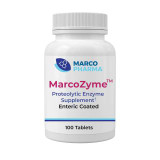Stroke - Understanding the Condition and Exploring Rehabilitation Approaches
Introduction:
A stroke is a sudden and potentially life-threatening medical emergency that occurs when blood flow to a part of the brain is interrupted or reduced, leading to brain cell damage and impairment of neurological functions. Strokes can have devastating effects on individuals, affecting their ability to move, speak, think, and perform everyday activities. However, with advances in medical treatment and rehabilitation approaches, many individuals can achieve significant recovery and improved quality of life after experiencing a stroke. This comprehensive article delves into what a stroke is, the types of strokes, risk factors, symptoms, and complications, as well as exploring various rehabilitation approaches to help stroke survivors regain function and independence.
Understanding Stroke:
A stroke, also known as a cerebrovascular accident (CVA), occurs when there is a disruption of blood supply to the brain, either due to a blockage in a blood vessel (ischemic stroke) or bleeding in the brain (hemorrhagic stroke). Ischemic strokes are the most common type, accounting for approximately 87% of all strokes, and are typically caused by a blood clot obstructing a blood vessel in the brain. On the other hand, hemorrhagic strokes result from a ruptured blood vessel in the brain, leading to bleeding and pressure on surrounding brain tissue. Transient ischemic attacks (TIAs), or "mini-strokes," are temporary episodes of stroke-like symptoms caused by a brief interruption of blood flow to the brain.
Risk Factors and Symptoms:
Several risk factors contribute to the development of stroke, including high blood pressure, diabetes, high cholesterol, smoking, obesity, physical inactivity, and a family history of stroke. Recognizing the warning signs and symptoms of stroke is crucial for prompt medical intervention and better outcomes. Common signs of stroke include sudden numbness or weakness in the face, arm, or leg, especially on one side of the body, sudden confusion, trouble speaking or understanding speech, sudden difficulty seeing in one or both eyes, sudden trouble walking, dizziness, loss of balance, or coordination, and sudden severe headache with no known cause.
Complications of Stroke:
Stroke can result in various complications, including paralysis, weakness, speech and language difficulties, cognitive impairments, emotional changes, and challenges with activities of daily living. Individuals who have experienced a stroke often require comprehensive rehabilitation to address these complications, restore function, and promote recovery. Rehabilitation plays a critical role in helping stroke survivors regain independence, improve quality of life, and maximize their recovery potential.
Rehabilitation Approaches:
Stroke rehabilitation is a multidisciplinary and individualized process that aims to address the physical, cognitive, emotional, and functional deficits caused by a stroke. Rehabilitation typically begins soon after the acute phase of stroke treatment, once the individual's condition has stabilized. The overarching goal of stroke rehabilitation is to help individuals relearn skills, regain function, and adapt to any lasting disabilities through a combination of therapy, education, and support. There are several key approaches to stroke rehabilitation that have been proven effective in promoting recovery and optimizing outcomes for stroke survivors:
1. Physical Therapy:
Physical therapy plays a crucial role in stroke rehabilitation by focusing on improving strength, balance, coordination, and mobility. Physical therapists work with individuals to develop personalized exercise programs that target specific muscle groups, improve range of motion, and enhance motor function. Through repetitive practice and task-specific training, individuals can regain motor control, increase endurance, and improve gait and balance, ultimately enhancing their ability to perform daily activities independently.
2. Occupational Therapy:
Occupational therapy is aimed at helping individuals regain the ability to perform everyday tasks and activities that are essential for independent living. Occupational therapists assess the individual's functional abilities, cognitive skills, and environmental needs to develop customized rehabilitation plans. By focusing on activities such as dressing, bathing, grooming, meal preparation, and household chores, occupational therapy aims to enhance functional independence, promote self-care skills, and improve quality of life for stroke survivors.
3. Speech Therapy:
Speech therapy, also known as speech-language pathology, plays a vital role in addressing communication and swallowing difficulties that may result from a stroke. Speech therapists work with individuals to improve speech articulation, language comprehension, cognitive-communication skills, and swallowing function. Through a variety of exercises, techniques, and strategies, speech therapy helps stroke survivors overcome speech and language impairments, enhance communication abilities, and reduce the risk of aspiration and swallowing disorders.
4. Cognitive Rehabilitation:
Cognitive rehabilitation focuses on addressing cognitive impairments, such as memory loss, attention deficits, executive dysfunction, and reasoning skills, that can occur as a result of a stroke. Cognitive rehabilitation interventions involve memory exercises, problem-solving tasks, attention training, and cognitive strategies to enhance cognitive function and promote independence in daily activities. By targeting specific cognitive deficits and utilizing evidence-based approaches, cognitive rehabilitation helps stroke survivors improve cognitive abilities, overcome challenges, and optimize their cognitive potential.
5. Psychological and Emotional Support:
Stroke rehabilitation also encompasses psychological and emotional support to address the emotional impact of stroke on individuals and their families. Psychologists, social workers, and counselors play a pivotal role in providing emotional support, coping strategies, and mental health interventions to help stroke survivors navigate the psychological challenges associated with stroke. Dealing with feelings of frustration, sadness, anxiety, and adjustment to a new way of life can be overwhelming for stroke survivors, and access to counseling and mental health support services can aid in the emotional healing process and promote overall well-being.
6. Assistive Technology and Adaptive Equipment:
Assistive technology and adaptive equipment are valuable tools used in stroke rehabilitation to help individuals compensate for physical, sensory, or cognitive impairments and facilitate independence in daily activities. Devices such as mobility aids, communication devices, adaptive utensils, and home modifications can assist stroke survivors in overcoming barriers, enhancing functional capacity, and promoting safety and comfort in their living environment. By utilizing assistive technology and adaptive equipment, stroke survivors can improve their quality of life and achieve greater autonomy in performing daily tasks.
7. Community Reintegration and Social Support:
Community reintegration programs and social support services play a crucial role in helping stroke survivors transition back to their home environment, reintegrate into their communities, and maintain social connections. Community-based rehabilitation programs, support groups, and peer mentoring initiatives provide opportunities for stroke survivors to engage with others, share experiences, and receive ongoing encouragement and support. By fostering social connections, promoting participation in meaningful activities, and empowering stroke survivors to navigate their social environments, community reintegration programs contribute to overall recovery and well-being.
Conclusion:
Stroke is a serious medical condition that requires prompt recognition, emergency treatment, and comprehensive rehabilitation to optimize outcomes and promote recovery. Through a multidisciplinary and individualized approach to stroke rehabilitation, healthcare professionals can address the physical, cognitive, emotional, and functional impairments that result from a stroke, helping individuals regain independence, improve quality of life, and achieve meaningful recovery milestones. By combining physical therapy, occupational therapy, speech therapy, cognitive rehabilitation, psychological support, assistive technology, community reintegration, and social support services, stroke survivors can receive holistic care that addresses their unique needs, promotes recovery, and supports their journey towards regained function and independence.
As research continues to advance, innovative approaches to stroke rehabilitation, such as virtual reality therapy, robotic-assisted therapy, and neurostimulation techniques, offer promising avenues for enhancing recovery outcomes and expanding treatment options for stroke survivors. By continuing to explore new technologies, evidence-based interventions, and interdisciplinary collaborations in stroke rehabilitation, healthcare providers can further improve the quality of care, outcomes, and quality of life for individuals affected by stroke. Ultimately, by integrating a comprehensive and holistic approach to stroke rehabilitation, tailored to individual needs and goals, the healthcare community can make a significant impact in helping stroke survivors rebuild their lives, regain function, and thrive in their recovery journey. Through ongoing education, research, and advocacy efforts, we can continue to advance the field of stroke rehabilitation, enhance clinical practice, and empower individuals affected by stroke to achieve their fullest potential and lead fulfilling and meaningful lives post-stroke.
In conclusion, stroke rehabilitation represents a critical phase in the recovery journey of individuals who have experienced a stroke, offering hope, support, and opportunities for physical, cognitive, emotional, and functional improvement. By understanding the complexities of stroke, recognizing the importance of early intervention and evidence-based treatment approaches, and embracing a multidisciplinary and patient-centered care model, healthcare professionals can make a significant difference in the lives of stroke survivors and their families. As we continue to expand our knowledge, refine our therapeutic strategies, and advocate for comprehensive stroke care, we move closer to achieving better outcomes, increased independence, and improved quality of life for individuals impacted by stroke. Through continued collaboration, innovation, and compassion, we can make a meaningful difference in the lives of stroke survivors, helping them navigate their recovery journey with strength, resilience, and hope.







